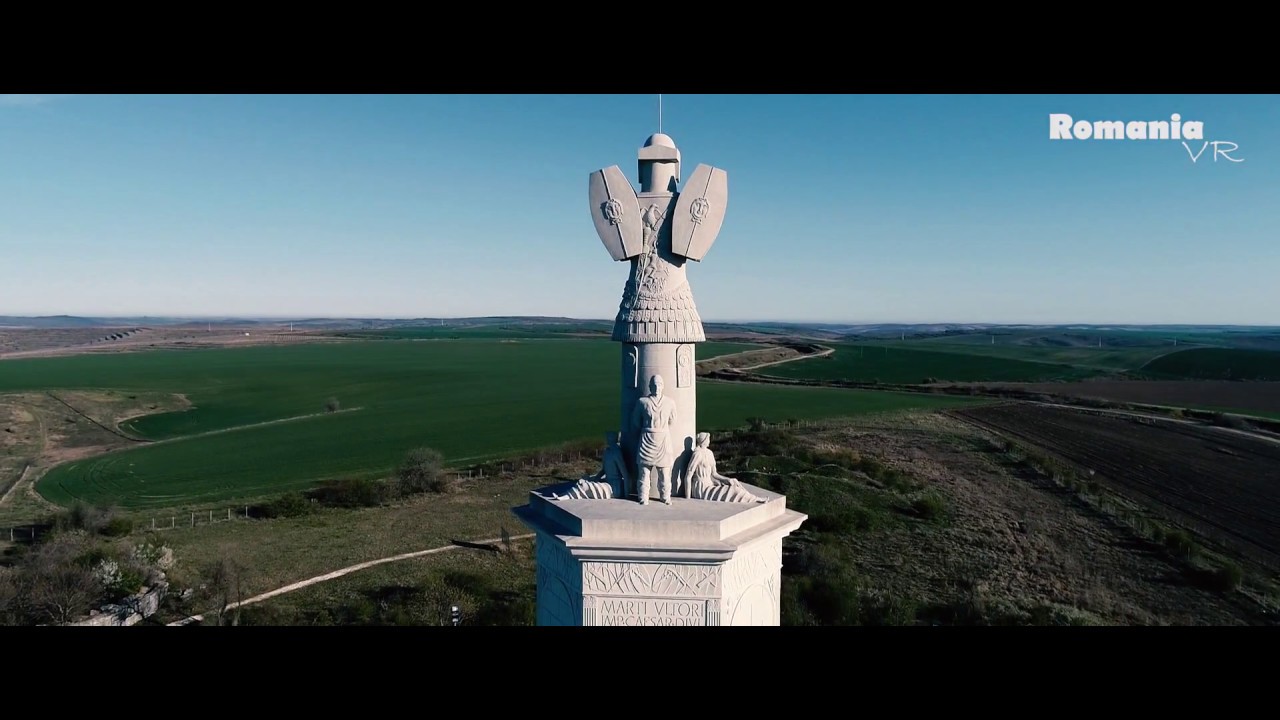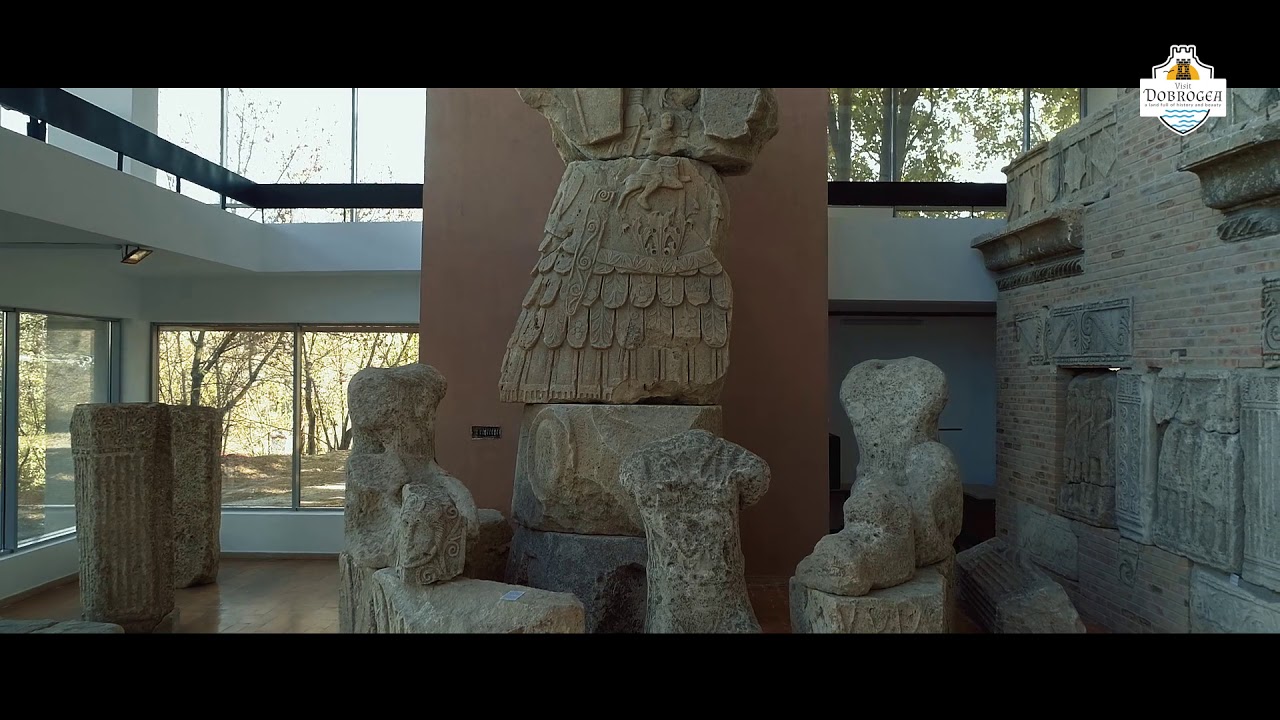Adamclisi a fost prima oprire pe ruta istoriei antice prin județul Constanța. Am plecat din București, cu mașina, puțin înainte de prânz și am luat-o pe drumul vechi spre mare, prin Oltenița și Călărași, până la Chiciu, de unde am trecut limita de județ, intrând în Constanța cu bacul peste Dunăre.
Adamclisi was the first stop on the ancient history route through Constanța County. We left from Bucharest, by car, shortly before noon and took the old road to the sea, through Oltenița and Călărași, up to Chiciu, from where we crossed the county border, entering Constanța by ferry across the Danube.

Dunărea la Chiciu // The Danube at Chiciu (via facebook.com/bacostrov)
1. Ajunși la Adamclisi undeva în jurul orei 15, am mers direct la Tropaeum Traiani, principalul motiv de oprire aici. A fost o plimbare plăcută prin parcul din jurul monumentului, absorbind ultimele raze de soare înainte de apusul de toamnă.
1. Arriving at Adamclisi around 3 p.m., we went straight to the Tropaeum Traiani, the main reason for stopping here. It was a pleasant walk through the park around the monument, absorbing the last rays of sunshine before the autumn sunset.
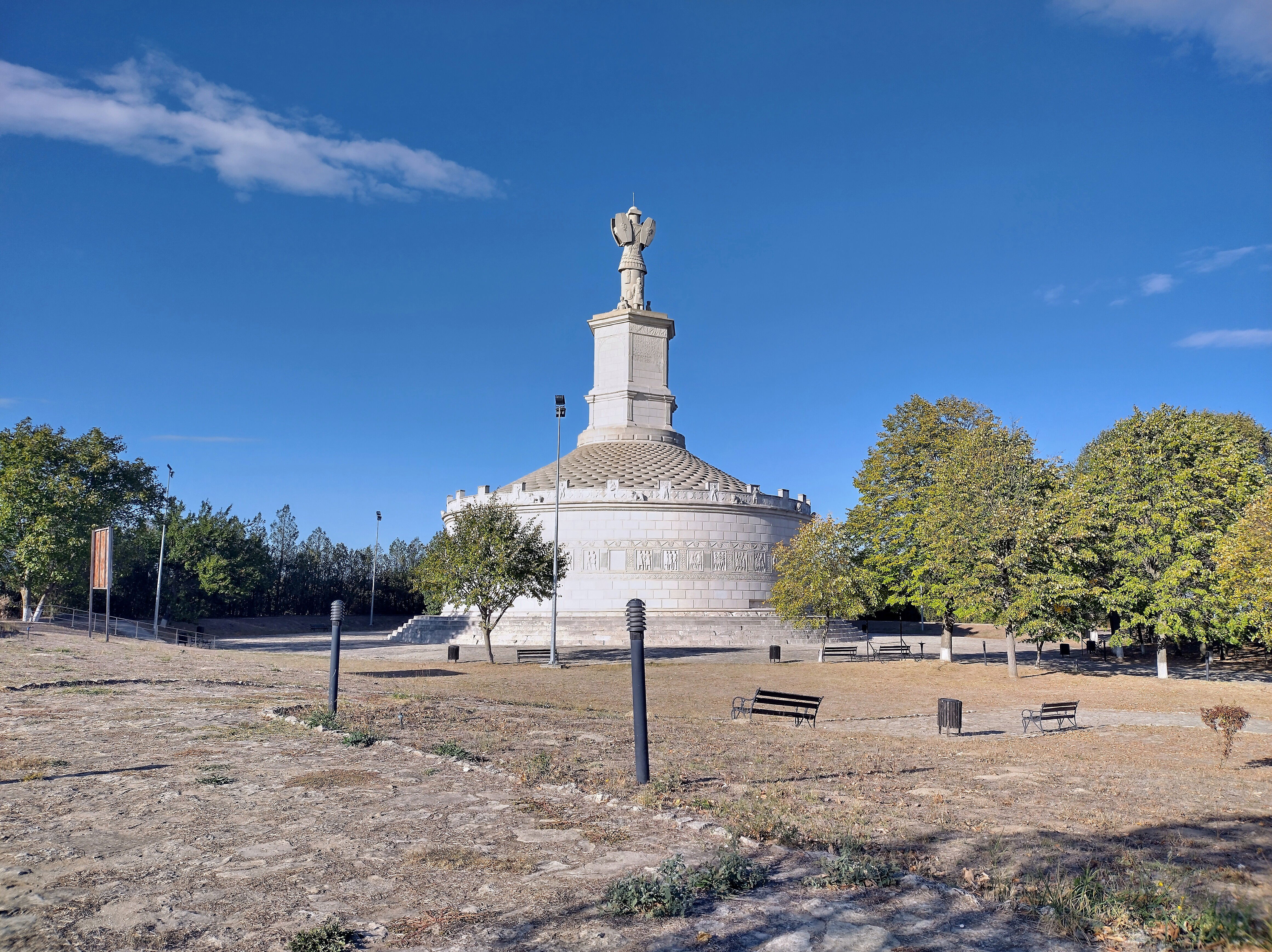
Tropaeum Traiani de la Adamclisi // The Tropaeum Traiani of Adamclisi
Bătălia de la Adamclisi, o confruntare crucială din Războaiele Dacice ale lui Traian în iarna anilor 101/102, a văzut triumful Imperiului Roman asupra dacilor, în ciuda pierderilor grele suferite de ambele tabere. În urma acestei confruntări, a fost construită o fortăreață romană numită Civitas Tropaensium, iar în anul 109 e.n., a fost ridicat Trofeul lui Traian (Tropaeum Traiani) pentru a sărbători victoriile romane.
The Battle of Adamclisi, a pivotal clash of Trajan's Dacian Wars in the winter of 101/102, saw the Roman Empire triumph over the Dacians despite heavy losses on both sides. In the aftermath, a Roman fort named Civitas Tropaensium was erected, and in 109 CE, Trajan's Trophy (Tropaeum Traiani) was raised to celebrate the Roman victories.
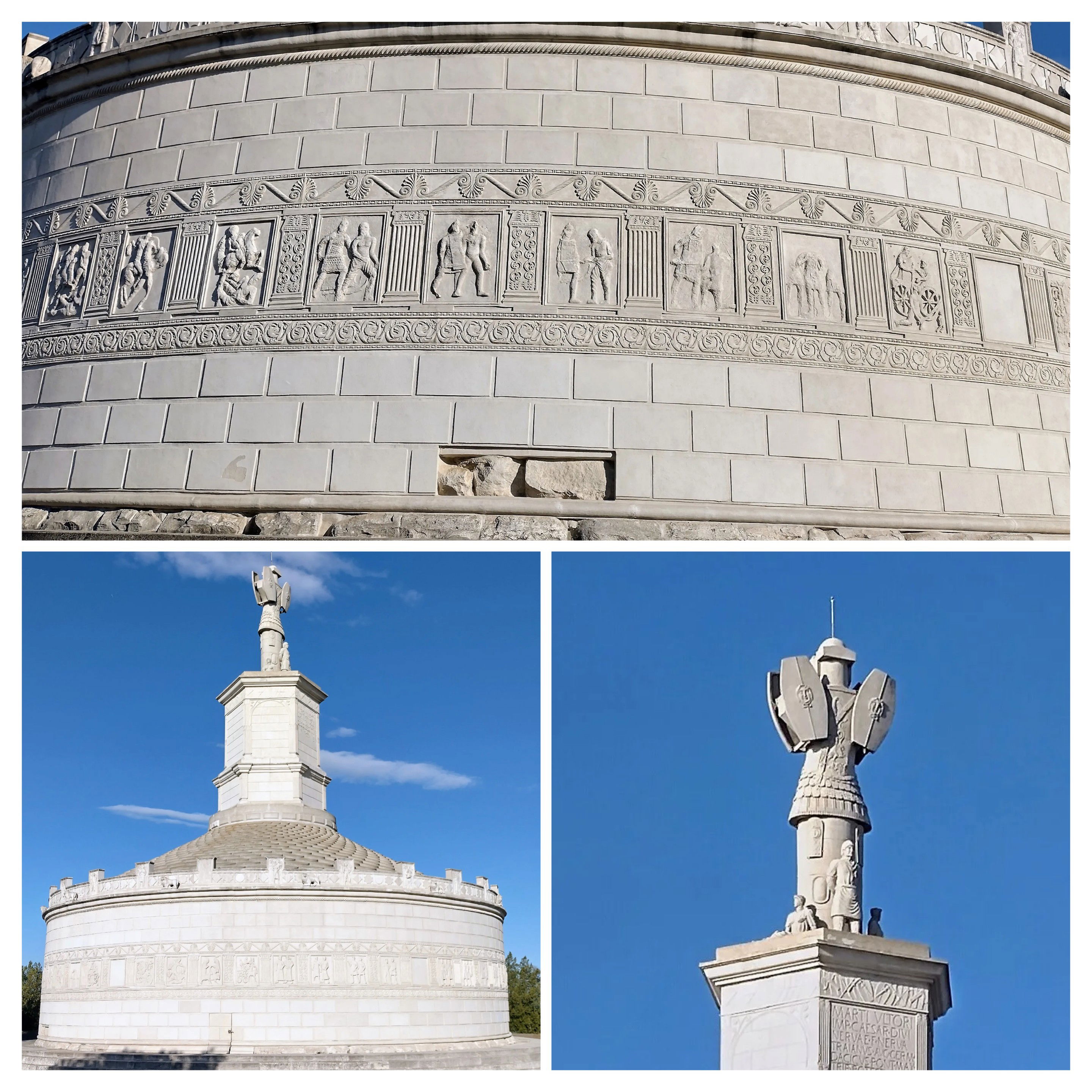
Monumentul și metopele de la baza acestuia // The monument and the metopes at its base
Noi nu am oprit să vizităm cetatea, dat fiind că aveam alte cetăți mai bine excavate pe traseu (Capidava și Istria), dar am văzut-o din mers, de pe șosea. Dar, pentru o foarte frumoasă vedere aeriană asupra monumentului și a cetății, precum și pentru o scurtă istorie arheologică a întregului complex (aceasta, din păcate, doar în Română), urmăriți filmulețul de mai jos.
We didn't stop to visit the fortress, considering that we had other better excavated fortresses along the way (Capidava and Istria), but we saw it along the way, from the road. But, for a very beautiful aerial view of the monument and the fortress, as well as for a brief archaeological history of the entire complex (unfortunately, only in Romanian), watch the video below.
Cetatea și monumentul // The citadel and monument (via minac.ro)
2. Ne-am învârtit cât ne-am învârtit și s-a făcut ora 16, iar la Muzeul de Arheologie se închide la ora 17, astfel că ne-am dus spre cazare1, cu gândul de a continua a doua zi. Și bine am făcut, căci să vii la Adamclisi și să vezi doar monumentul este o gravă privațiune: monumentul, deși frumos întreținut, este doar o replică a ceea ce a fost construit inițial - în Muzeul de Arheologie găsiți metopele originale și puteți privi de aproape istoria.
1. https://tinyurl.com/ythvn9hx
2. We wandered around until it was 4 p.m., and the Archaeology Museum closes at 5 p.m., so we headed back to our accommodation1, intending to continue the next day. And we did well, because coming to Adamclisi and seeing only the monument is a serious deprivation: the monument, although beautifully maintained, is just a replica of what was initially built - in the Archaeology Museum you can find the original metopes and closely examine history.
1. https://tinyurl.com/ythvn9hx
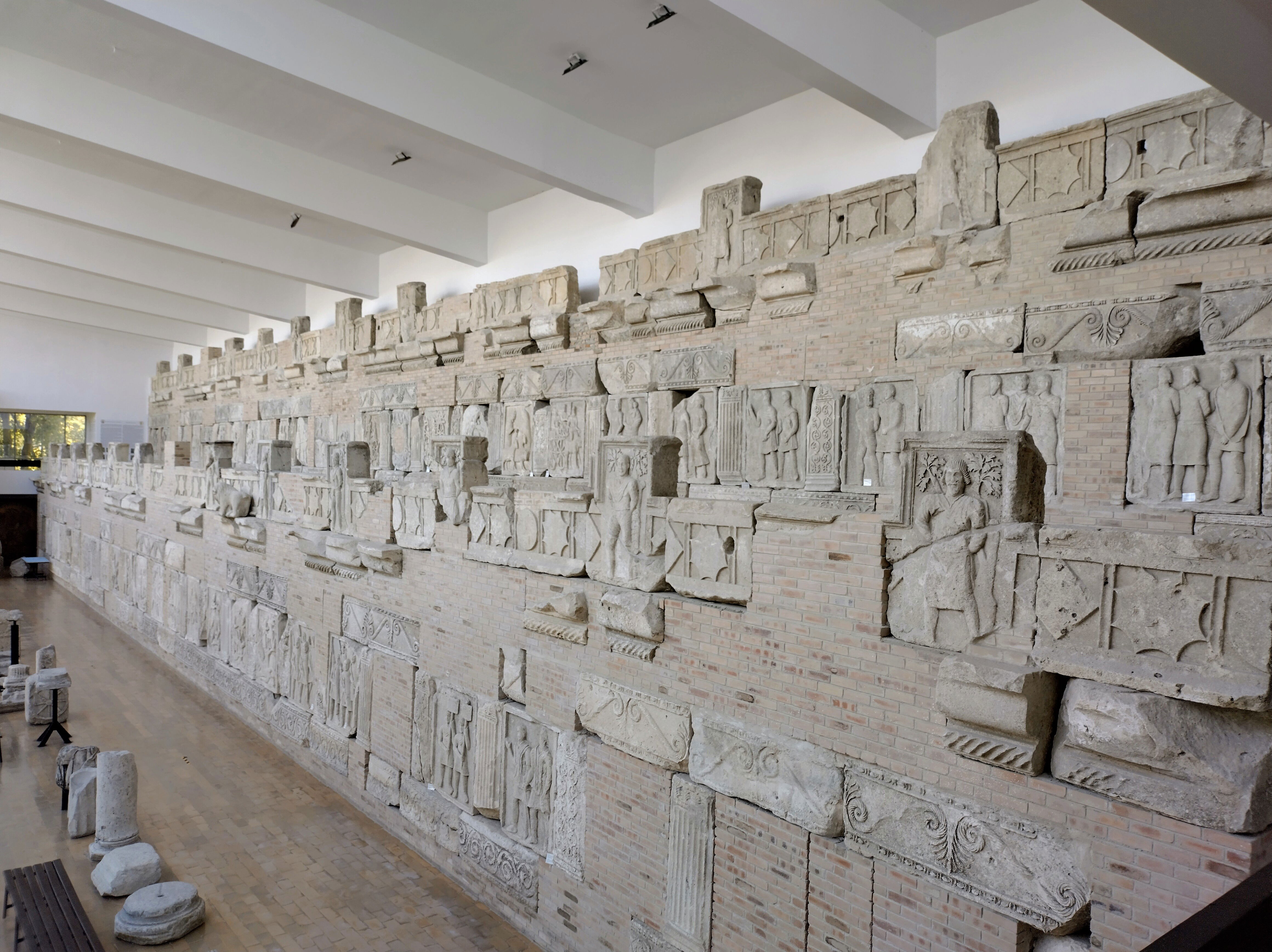
Zid cu metope, la începutul traseului prin muzeu // Wall of metopes, at the start of the museum tour
METÓPĂ s. f. (Arhit.) Spațiul dintre triglifele frizei ordinului doric, închis cu o placă de piatră netedă sau decorată cu picturi sau cu sculpturi. [...] Cei de pe metope sînt luptătorii pe cari a trebuit să-i biruiască Traian. - Pl.: metope. – Din fr. métope.
METOPE, f.n. (Archit.) The space between the triglyphs of the frieze in the Doric order, closed with a smooth stone plate or decorated with paintings or sculptures. [...] Those depicted on the metopes are the warriors whom Trajan had to defeat. - Pl.: metopes. – From Fr. métope.

Metope: Romanii, ajungând în Dacia rurală // Metopes: The Romans, reaching rural Dacia
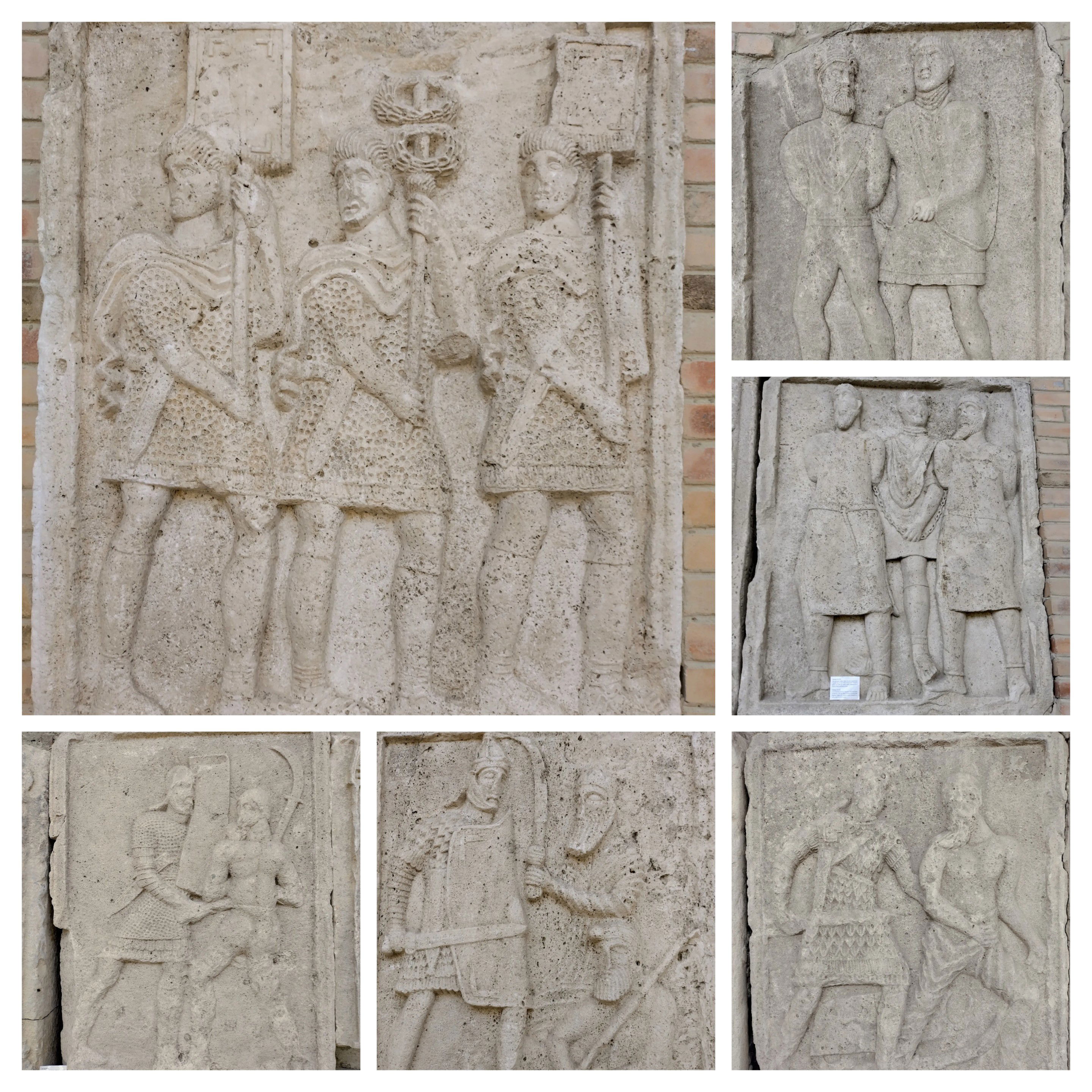
Metope: Victoria romană asupra Daciei, și prizonieri barbari (daci și germanici) // Metopes: Roman Victory over Dacia, and barbarian prisoners (Dacians and Germanics)
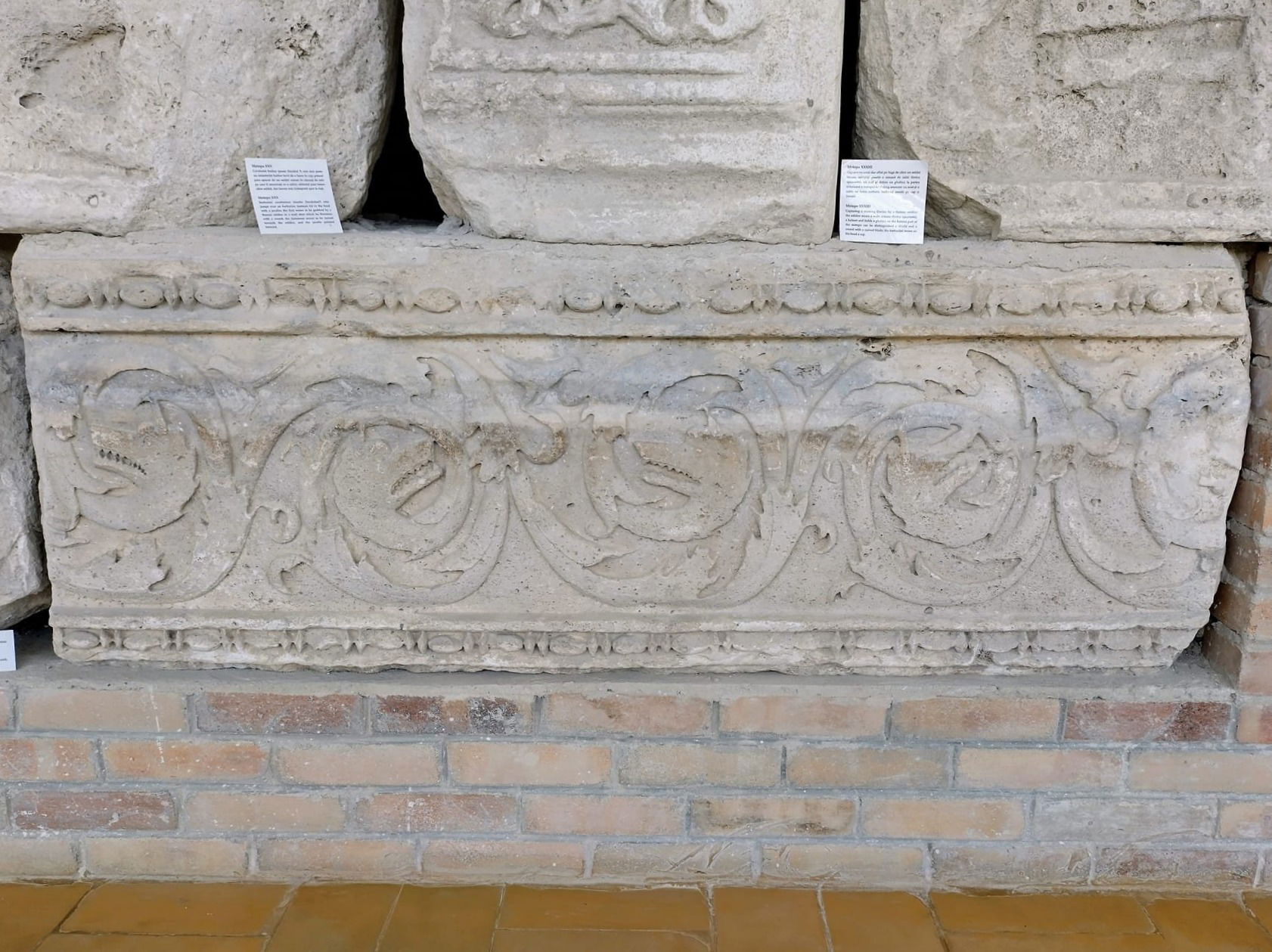
Exemplu de friză ornamentată // Example of ornamented frieze
Lăsând peretele cu metope pe partea dreaptă, coborâm spre monumentul original; pe drum mai vedem și diverse obiecte excavate din zonă, precum sticlărie, bijuterii, ceramică.
Leaving the wall with the metopes on the right side, we descend towards the original monument; along the way, we also see various objects excavated from the area, such as glassware, jewelry, ceramics.

Sticlărie romană // Roman glassware
La demisolul muzeului putem vedea diverse detalii arhitectonice, inscripții funerare dar și o machetă a monumentului. În capătul sălii tronează, în toată gloria sa, monumentul original al trofeului.
In the basement of the museum, we can see various architectural details from the area, funerary inscriptions, as well as a model of the monument. At the end of the hall, the original monument of the trophy reigns in all its glory.
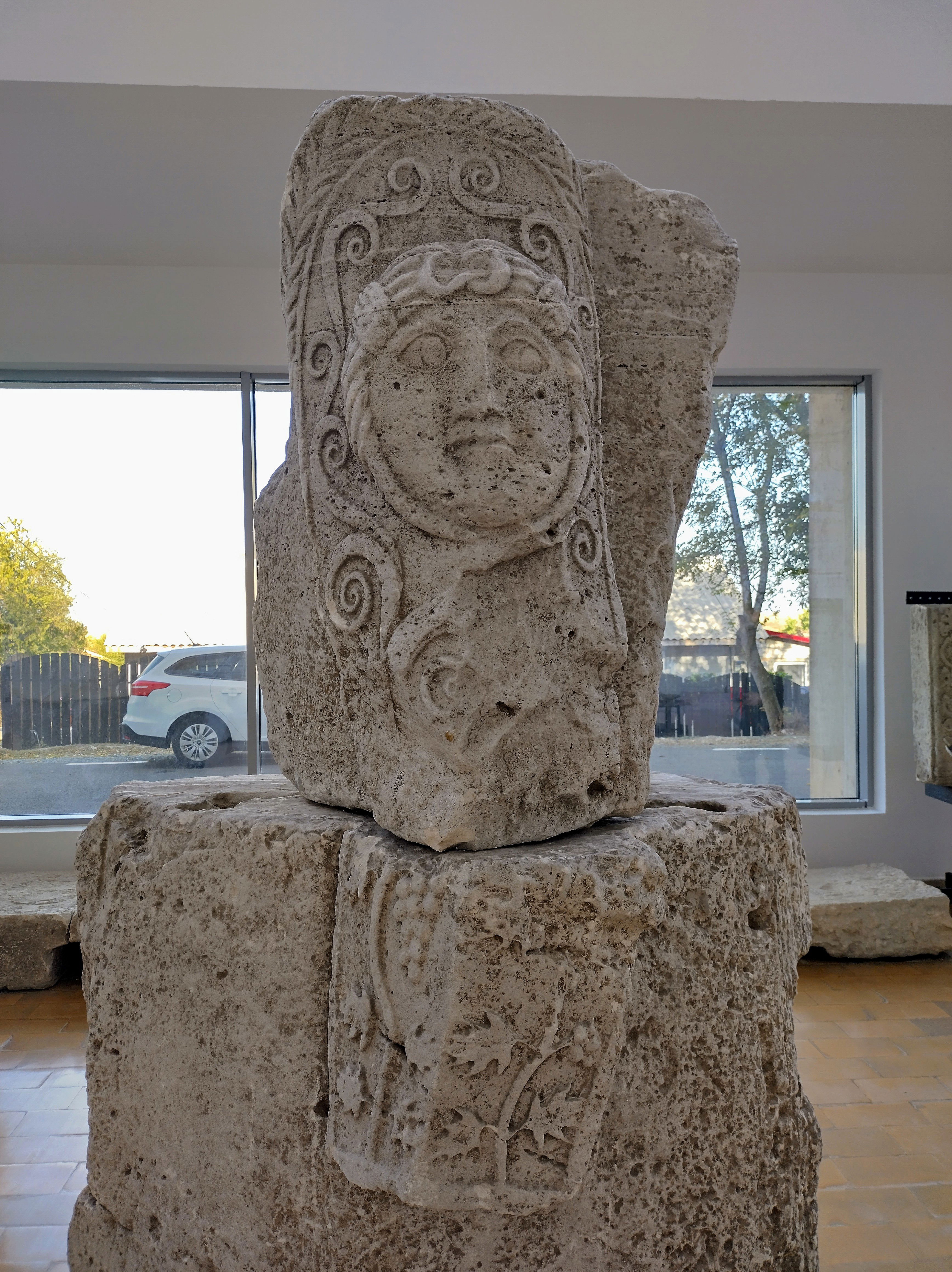
Pilastru ornamental // Ornamental pilaster
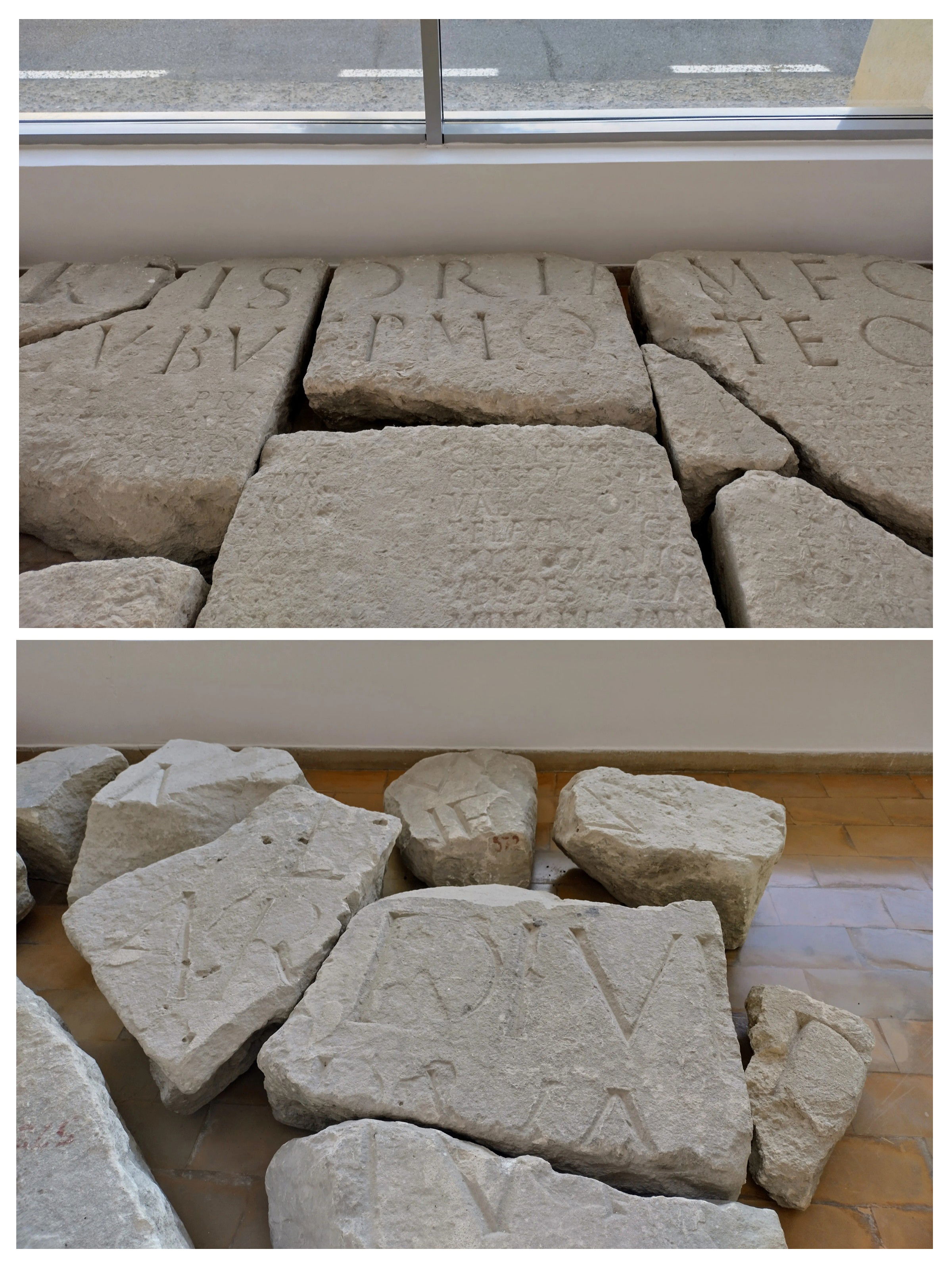
Inscripții funerare // Funerary inscriptions
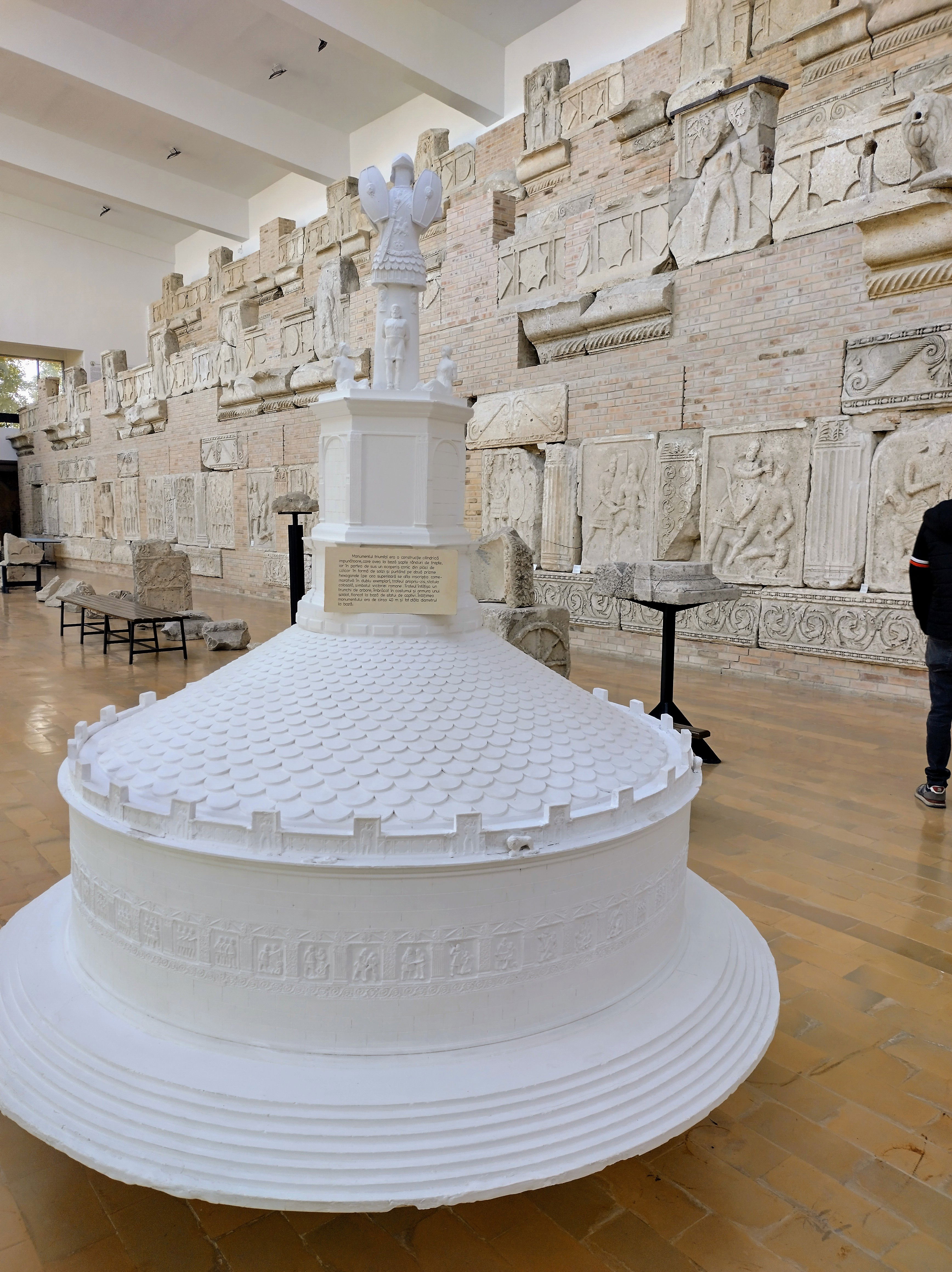
Macheta monumentului // The model of the monument

Tropaeum Traiani // Tropaeum Traiani
Aruncăm, împreună cu voi, o ultimă privire în Muzeul de Arheologie și apoi, cu sufletul deja plin de istorie, plecăm de la Adamclisi către Capidava.
Together with you, we cast a final glance at the Archaeology Museum and then, with our hearts already filled with history, we leave from Adamclisi towards Capidava.
Muzeul de Arheologie // The Archaeology Museum (via minac.ro)
- Cost: 10 RON taxa de intrare în parcul monumentului + 10 RON taxa de intrare în muzeu + benzină + bac
- Durată: 3 ore, din care o oră la monument și 2 ore la muzeu
- Verdict: 9/10 - merită mult!
- Cost: 10 RON entrance fee to the monument park + 10 RON entrance fee to the museum + gasoline + ferry
- Duration: 3 hours, out of which one hour at the trophy and 2 hours at the museum
- Verdict: 9/10 - worth it a lot!
